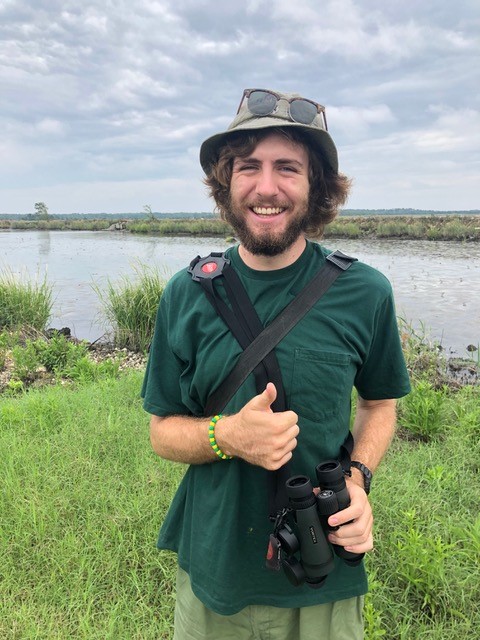
Every summer since 1979, the Bruce Museum Seaside Center, a beachside environmental education center located in Greenwich Point Park, has offered local children and their families a wealth of programs and activities centered on exploring the region’s diverse ecology and natural history. There is no admission fee for the Seaside Center, housed within the Floren Family Environmental Center at Innis Arden Cottage, though from May through October, both residents and non-residents need a beach pass to enter the park.
As the spring of 2020 progressed, it became increasingly clear that the Seaside Center would not be able to open as usual this summer. Almost all of the programming is geared toward close interaction and tactile exploration, and the physical space of the Seaside Center is not well-suited for social distancing. Ultimately, Kate Dzikiewicz, the Bruce Museum Science Curatorial Associate who manages the Seaside Center, made the difficult decision to keep the doors closed for the summer. However, just because the Seaside Center was physically closed, didn’t mean that it had to be completely absent this summer. That’s where Seaside Center naturalist Brendan Murtha came in.
Brendan is an undergraduate studying ecology, evolution, and marine biology at Bowdoin College, in Brunswick, Maine. Having grown up in Norwalk, Connecticut, he volunteered at the Seaside Center during summers in high school and was accepted as a full-time naturalist for the 2020 season. When Kate told Brendan that the programming would be entirely digital this year, he adeptly rose to the challenge.
“At the beginning of this summer, I was nervous,” Brendan recalls. “I had come on board as the Seaside Center naturalist just before leaving for my winter semester studying abroad in Ecuador, and everything looked like it would line up quite nicely – I had a solid, concise idea of what the season would look like, what programming I’d run, and throughout my time away more ideas continued to come to me.”
“Even after getting sent home from Ecuador in late March, I figured lockdown would let up by summer and an in-person season could be salvaged,” says Brendan. “Kate and I traded in this optimism until reality set in.”
“The question that soon arose, of course, is what would an ‘online’ Seaside Center look like? Whatever the answer, it would be unprecedented, and challenging to get right,” says Brendan. “Much of the Seaside Center’s magic comes from its entanglement with place, its ‘hands-on’ approach to local wildlife and ecosystems. Could any digital format hope to replicate that?”
Kate and Brendan spent late spring brainstorming potential programming, and together they designed a three-pronged virtual approach that they hoped would bring the fun and learning of the Seaside Center to area kids and their families, whether they were enjoying a socially-distanced day at the beach or staying safe at home.
They prioritized three lines of programming: educational videos, articles, and, in collaboration with Bruce Museum educator Corinne Flax, “guided explorations” featuring art and science activities focused on the ecology of Long Island Sound. The scope of this content was intended to mirror what might be covered during a typical season at the Seaside Center, with the series of videos, articles, and activities released online on a weekly basis.
Serving as cinematographer, writer, editor, narrator, and producer, over the course of the summer, Brendan created six brief video documentaries that dived into the ecology and history of Long Island Sound. In these videos, which can be accessed via this link, viewers can learn about what critters might be lurking around the rocks that line the shallow waters off the beach, how the Long Island Sound was formed by ice age glaciation, what invasive species are impacting our shores, and more.
Specific animals were highlighted in more detail in Brendan’s written series, Local Wildlife Weekly. These articles can be found on the Bruce Museum Science Department’s blog, Storage Room No. 2. In these entries, Brendan combines his nature photography with personal anecdotes and facts about birds, insects, and other animals that are frequently seen near the Seaside Center, but often ignored.
Finally, Brendan, along with Corinne Flax, Manager of School and Community Partnerships at the Bruce Museum, produced weekly summer activities in the Seaside Saturday series. These eight activities guide learners and their helpers through four different seaside topics, encouraging families to learn in nature, and to take nature home in simple and fun art and craft projects.
“Though we would have liked to be out with our community in person this summer, Brendan Murtha’s great work ensured that it was still a summer well spent for the Seaside Center,” says Kate. “We wish Brendan well in his final year at Bowdoin, and hope to work with him again, and in person, next summer!
For more information about the Bruce Museum Seaside Center, please visit this page at brucemuseum.org, or contact Seaside Center Manager Kate Dzikiewicz at kdzikiewicz@brucemuseum.org or 203-413-6747. To support the Seaside Center’s educational programs, please visit this page at brucemuseum.org.
Please click on this link to the Storage Room No. 2 blog, to read a fascinating postscript from Brendan, recounting a richly productive and rewarding summer as the Seaside Center’s Digital 2020 Naturalist.